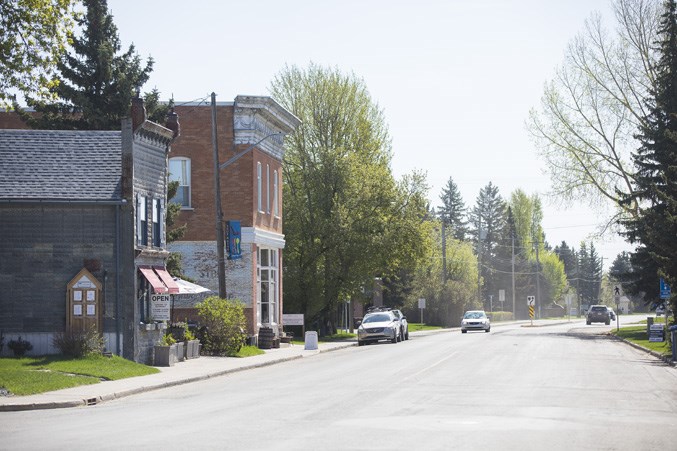Trains played an integral part in the development of Okotoks at the beginning of the 20th century. The railway made the town a hub for industry, including oil, agriculture, coal and lumber. It also brought postal service and passengers to town, helping it boom in its infancy. It’s no wonder two roads in town pay homage to the tracks, said Okotoks museum specialist Kathy Coutts. North Railway Street and South Railway Street still run alongside the rail line in town, and North Railway follows the route of the original Macleod Trail. “It almost looks now that it parallels the railway, but it existed before the railway,” said Coutts. “Then Macleod Trail turned into North Railway Street anf then on the south side of the tracks was South Railway.” Originally, South Railway Street ended near present-day Cameron Crossing School and the school bus compound, eventually running through to what is now Veterans Way, she said. It serviced a small residential neighbourhood along the river. North Railway Street, by contrast, housed a number of businesses, including the general store, train station and post office. It took time to get to that point. The rail line from Calgary south to Fort Macleod was first surveyed in 1890, and construction began in 1891. Combination stations were established in DeWinton, Okotoks, High River, Nanton and Claresholm, where passenger and freight service were both available. Not all communities had access to the rail – intermediate “sidings” were located in Midnapore, Aldersyde, Cayley, Stavely and Granum, where people could flag down and catch a train but wouldn’t have freight services, said Coutts. “It was the same in Turner, Academy, Sandstone and Azure,” said Coutts. “They were more just platforms there, they wouldn’t have had a structure. It wasn’t an actual station.” In Okotoks, the original wood train station served the wider rural community as a service centre, she said. Freight was delivered to the station to be sent by rail on a regular basis, she said. “That’s one of the reasons Okotoks prospered as it did,” said Coutts. “It certainly played an important role during the boom days out in the Turner Valley oilfields area because it was the closest railhead, so equipment bound for the oilfields got off here.” A customs house was established in Okotoks because equipment for the oilfields was coming up from the United States, she said. The rail yard was filled with pipes and supplies for the oilfields. In addition, Okotoks had two coal tipples, which loaded railcars with coal out of Black Diamond, she said. Because Okotoks had a railway line through town, five grain elevators were established in town and made it an agricultural service centre as well, she said. It was also used to ship livestock to market, and farmers brought cattle to stockyards outside the station. During the First World War, horses from Okotoks-area ranchers were purchased by the British and French armies and sent by rail to eastern Canada, where they would then be sent to the frontlines, she said. “You take the rail-line away, and then you wouldn’t have the grain elevators here, you wouldn’t have the oil industry establish here,” said Coutts. “It’s all linked back to the rail line.” The town also boasted a passenger service, where people would come to catch trains to Calgary or south to the States, she said. “The train station connected local residents with the rest of the world,” said Coutts. “It brought mail, it brought new residents, visitors, investors, connected communities, and brought convenience.” A day’s journey into Calgary was reduced to less than an hour with the railway, she said. In 1928 the wooden train station burned to the ground, but the current brick structure was built in its place, she said, and it continued to serve the community. By 1955 the conventional passenger train had been replaced by a day-liner, which made travel to downtown Calgary just 35 minutes, she said. “The last passenger train stopped in Okotoks in 1971, and the station closed one year later,” said Coutts. It sat abandoned for nearly a decade. The Town purchased the building from CP Rail in 1979, and then debate began over what to do with it – bulldoze the structure and build something else, or turn it into something useful for the community. The Okotoks Arts Council incorporated in 1981 for the purpose of developing the train station into a multi-cultural centre, she said. “The rail has had a significant impact on the community,” said Coutts. “It still does, if you consider the goods we see travel through Okotoks on a regular basis, the sound of the horn, the rumble on the tracks. It’s part of our life here.”




